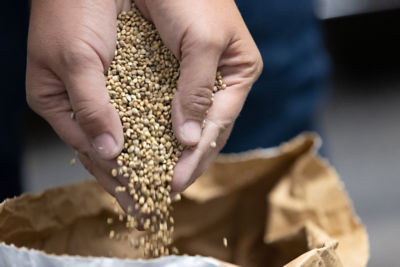Causal Agent
Cucurbit yellow stunting disorder virus (CYSDV)
Vector
Silverleaf whitefly (Bemisia tabaci biotypes B and Q)
Distribution
Worldwide
Symptoms
CYSDV was previously thought to be restricted to the Cucurbitaceae family, but it is now recognized that CYSDV also infects crop and weed species such as alfalfa, lettuce, snap bean, alkali mallow and Wright groundcherry. Symptoms initiate as interveinal mottling on older leaves, intensify with age and become systemic throughout the plant. Veins remain relatively green as the rest of the leaf turns yellow. Leaves may roll upward and become brittle. Melon and cucumber exhibit the most severe symptoms, which can be confused with nutrient deficiency or other yellowing viruses. Melon fruit does not express obvious symptoms, although sugars can be reduced dramatically.
 Melon leaf symptoms of Cucurbit yellow stunting disorder virus manifest as mottling, turning to green spots (left) and advance to severe interveinal chlorosis (right). (Right photo courtesy of Judy Brown)
Melon leaf symptoms of Cucurbit yellow stunting disorder virus manifest as mottling, turning to green spots (left) and advance to severe interveinal chlorosis (right). (Right photo courtesy of Judy Brown)
Conditions for Development
CYSDV is transmitted by the silverleaf whitefly vector, Bemisia tabaci biotypes B and Q, which can be transported long distances via air currents. Outbreaks are often associated with high infestations of Bemisia tabaci. The virus is not mechanically transmitted and is not seed-borne or seed-transmitted. Bemisia tabaci needs to feed for at least 18 to 24 hours to transmit the virus and can remain infective for up to eight days.
Control
Insect exclusion (minimum 50–52 mesh/297 micron screens) and a preventative insecticide spray program in transplant nurseries can help to minimize whitefly infestations. Yellow adhesive traps are useful for monitoring the presence of Bemisia tabaci. Control weeds to eliminate potential sources of inoculum. In open-field production, early season exclusion of the vector using mesh tunnels may delay virus infection. Application of insecticides for whitefly control is not an effective method to manage virus spread in the field. Commercial varieties with CYSDV resistance are available in cucumber, but are not yet available in other cucurbits.



